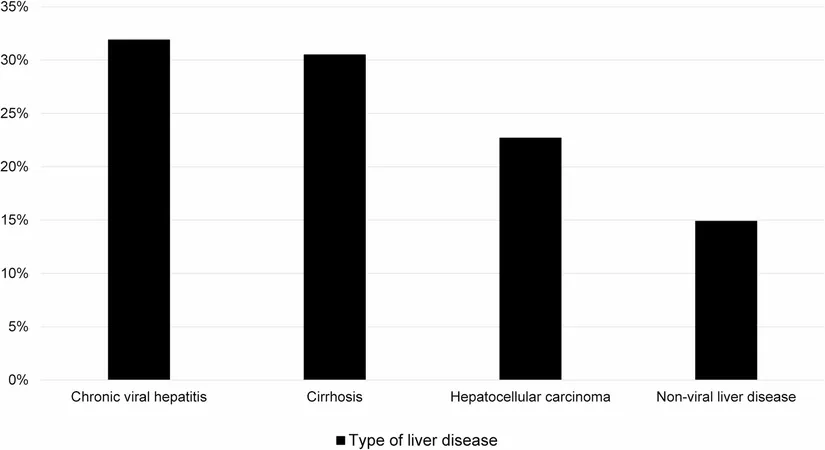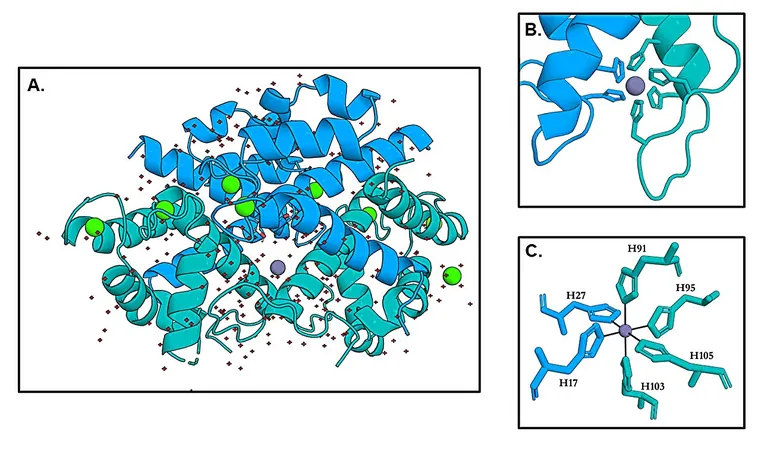
Unlocking the Secrets to Health-Seeking Behavior in Chronic Liver Disease Patients: A Deep Dive
2025-09-19
Author: Arjun
The Struggles of Chronic Liver Disease Patients
Chronic liver disease (CLD) is not just a medical issue; it’s a financial nightmare for many families. Patients face direct costs from healthcare expenses, but when health declines, the indirect costs pile up, making it impossible for them to maintain employment. With projections showing an 83% surge in healthcare costs over the next twenty years, the burden on these patients will be astronomical. The COVID-19 pandemic has only worsened this situation, doubling health expenditures and disproportionately affecting those in developing countries, where public health resources are lacking.
Mental Health: The Hidden Crisis
Many CLD patients grapple with mental health issues, which can lead to isolation and decreased willingness to seek treatment. This anxiety and depression are often exacerbated by the financial strain of managing their condition. Patients frequently exhibit negative emotions, which can hinder their treatment progress. Furthermore, research shows that the severity of illness is directly linked to increased levels of distress and depression, creating a vicious cycle.
The Importance of Support Systems
Social networks play a vital role in a patient’s health-seeking behavior. Lack of family or caregiver support often prevents patients from accessing necessary healthcare, particularly for more invasive treatments like surgery. Encouragement from loved ones can be the lifeline needed to motivate patients to pursue proper treatment and manage their symptoms effectively.
Health Literacy: The Key to Empowerment
Low health literacy significantly impacts CLD patients, contributing to depression and a reluctance to continue treatment. Sadly, many lack basic knowledge about their disease, which can lead to poor health perceptions. This highlights the urgent need for continuous support and education, especially in developing regions where educational backgrounds are often minimal.
The Situation in Pakistan: A Wake-Up Call
In Pakistan, CLD is a leading cause of mortality, primarily due to diseases like hepatitis C. The healthcare system here is fraught with challenges, especially for economically disadvantaged patients who rely heavily on underfunded public services. Even seemingly 'free' services entail hidden costs that are overwhelming for a population living on low incomes.
Healthcare Access and its Challenges
The PKLI&RC in Lahore stands out as a leading provider of liver care, treating millions at subsidized costs. However, the treatment landscape in Pakistan is complex, with many seeking alternative remedies when public healthcare falls short. Continuous access to quality healthcare, alongside trust in providers, is crucial for improving health-seeking behaviors.
A Call to Action for Health Policy
To tackle the CLD epidemic, a multi-faceted approach is needed: better health education, support systems for families, and an urgent call for government intervention to improve public health facilities. Programs that address the social determinants of health and enhance mental health services for CLD patients can enable more effective disease management.
The Road Ahead: Hope and Change
Research shows a clear link between social support, health literacy, and health-seeking behaviors. CLD patients require robust support systems, not just in medical terms but as part of a broader social framework. By addressing these challenges comprehensively, future strategies can enhance health outcomes for CLD patients, paving the way for a healthier society.




 Brasil (PT)
Brasil (PT)
 Canada (EN)
Canada (EN)
 Chile (ES)
Chile (ES)
 Česko (CS)
Česko (CS)
 대한민국 (KO)
대한민국 (KO)
 España (ES)
España (ES)
 France (FR)
France (FR)
 Hong Kong (EN)
Hong Kong (EN)
 Italia (IT)
Italia (IT)
 日本 (JA)
日本 (JA)
 Magyarország (HU)
Magyarország (HU)
 Norge (NO)
Norge (NO)
 Polska (PL)
Polska (PL)
 Schweiz (DE)
Schweiz (DE)
 Singapore (EN)
Singapore (EN)
 Sverige (SV)
Sverige (SV)
 Suomi (FI)
Suomi (FI)
 Türkiye (TR)
Türkiye (TR)
 الإمارات العربية المتحدة (AR)
الإمارات العربية المتحدة (AR)